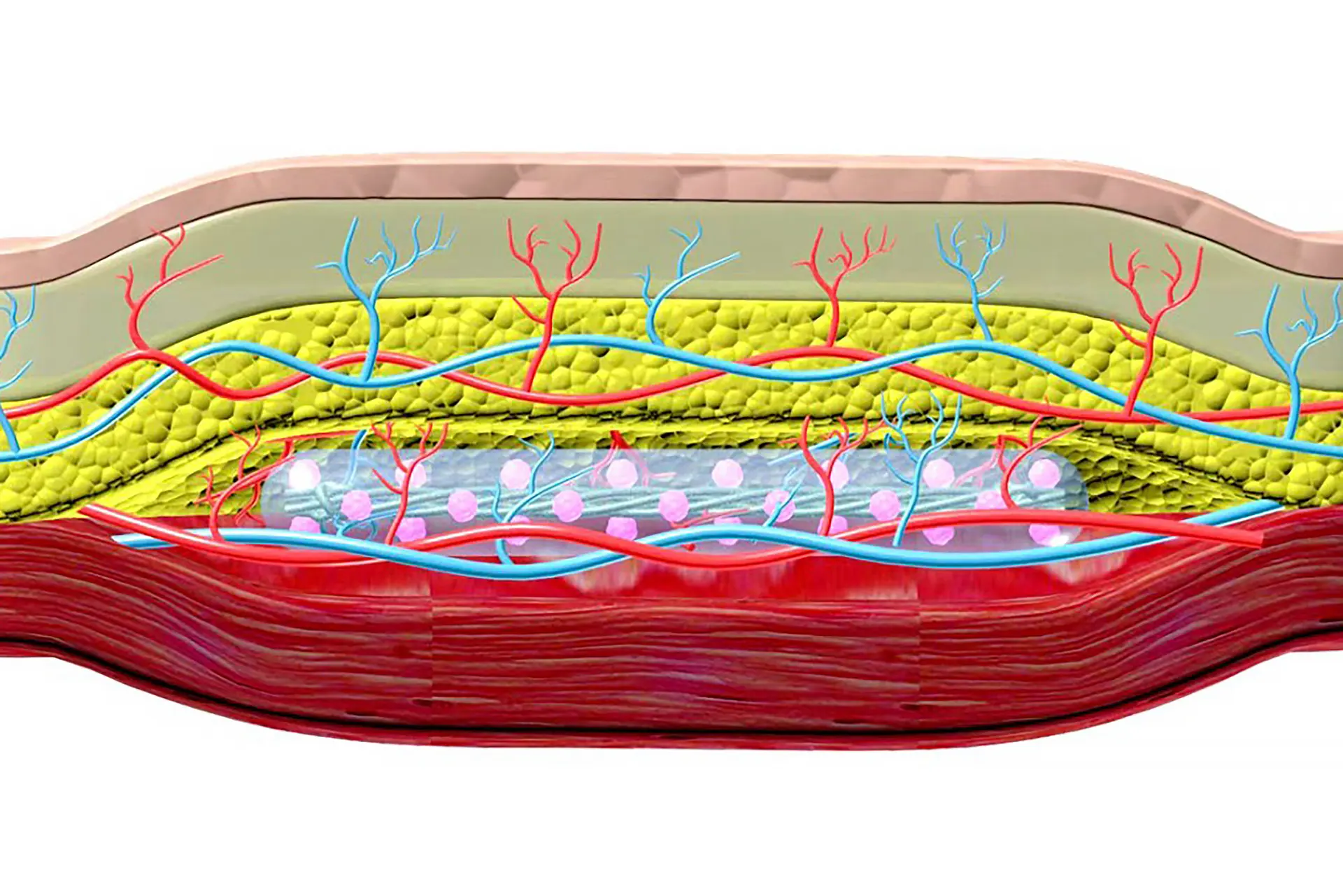
A thread-like implant, or SHEATH (Subcutaneous Host-Enabled Alginate THread), stimulates the body’s production of insulin, a hormone that regulates blood sugar levels.
In type 1 diabetes, the body’s immune system attacks and destroys the insulin-producing cells of the pancreas (called the islets of Langerhans), preventing secretion and requiring lifelong insulin or the use of an insulin pump. But now researchers from Cornell University in collaboration with the University of Alberta have proposed a method that will, in fact, generate such islets and stimulate the production of the necessary hormone.
First, a thread-like nylon implant is inserted under the skin for about 4-6 weeks, which causes a controlled inflammatory reaction and thus “collects” a network of blood vessels around it. Next, the device is removed, and an alginate device with “islets” up to 10 cm long is inserted into the resulting pocket, which is supplied with oxygen and nutrients by previously collected blood vessels.
“It can be done on an outpatient basis, under local anesthesia, so you don’t have to stay in the hospital for a long time.”
SHEATH was implanted in mice with diabetes, resulting in a reversal of their condition without the need for immunosuppression.
The experiments showed a reliable ability to treat diabetes for a long time – and some mice achieved correction of high blood glucose levels for more than 190 days. In addition, the system allowed the removal and replacement of a faulty implant.
To demonstrate the scalability of the system, the researchers successfully developed procedures to implement SHEATH in minipigs – including insertion, removal, and replacement of the implant.
In the future, it remains to determine the acceptable length of the implant and anatomically suitable places for its location.
The problem is that it is difficult to keep these islets functional for a long time in the body with the device. It is designed so that we can maximize the mass exchange of nutrients and oxygen, but we may need to provide additional means to support the cells for long-term performance in large animal models and eventually in humans.”
Despite these problems, the researchers hope that future versions of the implants will be able to last two to five years before they need to be replaced.
The study was published in the journal Nature Biomedical Engineering.
Source: Engadget, New Atlas




